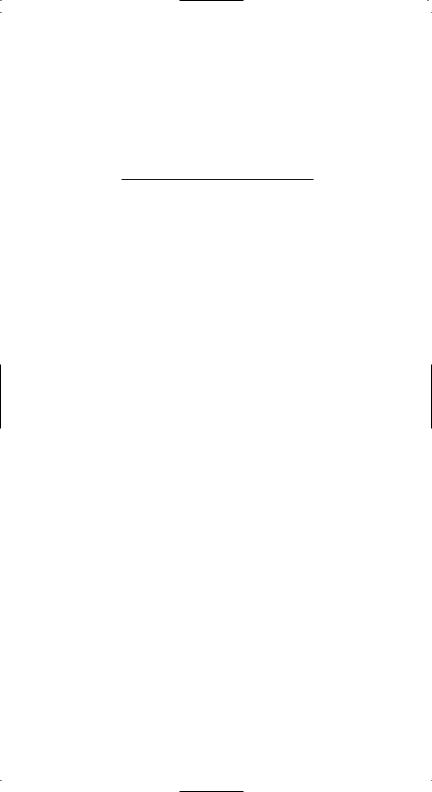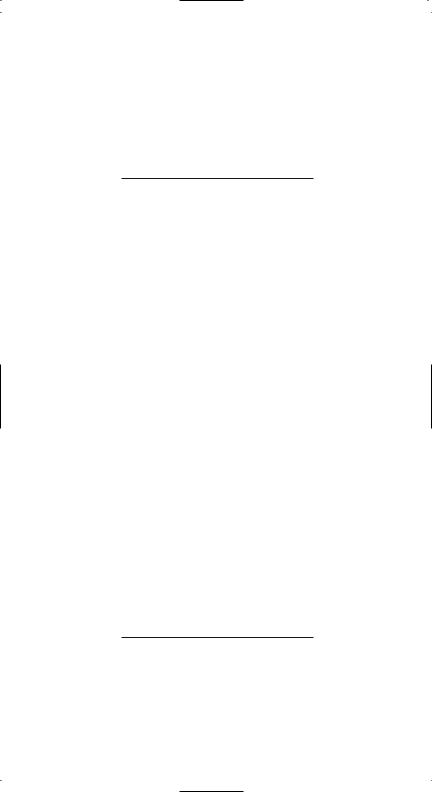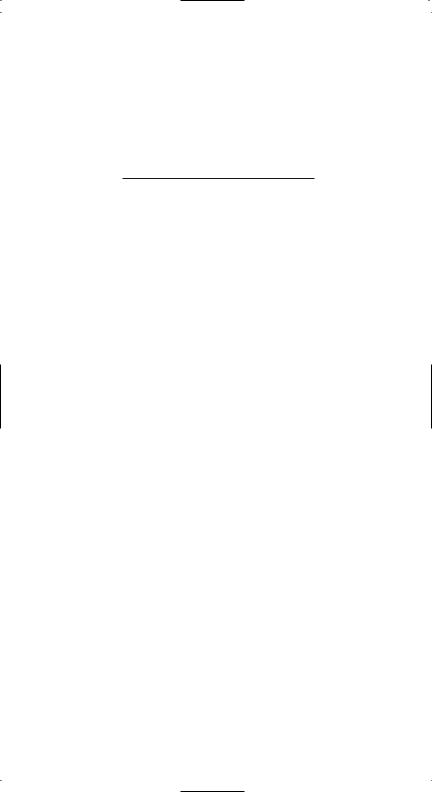
A Dictionary of Neurological Signs
.pdf

A DICTIONARY
OF NEUROLOGICAL SIGNS
SECOND EDITION

A DICTIONARY OF NEUROLOGICAL SIGNS
SECOND EDITION
A.J. LARNER
MA, MD, MRCP(UK), DHMSA
Consultant Neurologist
Walton Centre for Neurology and Neurosurgery, Liverpool Honorary Lecturer in Neuroscience, University of Liverpool Society of Apothecaries’ Honorary Lecturer in the
History of Medicine, University of Liverpool
Liverpool, U.K.

A.J. Larner, MA, MD, MRCP(UK), DHMSA
Walton Centre for Neurology and Neurosurgery
Liverpool, UK
Library of Congress Control Number: 2005927413
ISBN-10: 0-387-26214-8
ISBN-13: 978-0387-26214-7
Printed on acid-free paper.
© 2006, 2001 Springer Science+Business Media, Inc.
All rights reserved. This work may not be translated or copied in whole or in part without the written permission of the publisher (Springer Science+Business Media, Inc., 233 Spring Street, New York, NY 10013, USA), except for brief excerpts in connection with reviews or scholarly analysis. Use in connection with any form of information storage and retrieval, electronic adaptation, computer software, or by similar or dissimilar methodology now known or hereafter developed is forbidden.
The use in this publication of trade names, trademarks, service marks, and similar terms, even if they are not identified as such, is not to be taken as an expression of opinion as to whether or not they are subject to proprietary rights.
While the advice and information in this book are believed to be true and accurate at the date of going to press, neither the authors nor the editors nor the publisher can accept any legal responsibility for any errors or omissions that may be made. The publisher makes no warranty, express or implied, with respect to the material contained herein.
Printed in the United States of America. |
(SPI/EB) |
9 8 7 6 5 4 3 2 1
springeronline.com

To Philippa, Thomas, and Elizabeth

“ ... there are many works useful and even necessary, which require no genius at all; and dictionary making is one of these.”
James Burnet, Lord Monboddo.
Of the origin and progress of language: 1773-1792: V, 273
“I know ... that Writers of Travels, like Dictionary-Makers, are sunk into Oblivion by the Weight and Bulk of those who come after, and therefore lie uppermost.”
Jonathan Swift
Gulliver’s Travels: 1726

FOREWORD TO THE FIRST EDITION
Neurology has always been a discipline in which careful physical examination is paramount. The rich vocabulary of neurology replete with eponyms attests to this historically. The decline in the importance of the examination has long been predicted with the advent of more detailed neuroimaging. However, neuroimaging has often provided a surfeit of information from which salient features have to be identified, dependent upon the neurological examination. A dictionary of neurological signs has a secure future.
A dictionary should be informative but unless it is unwieldy, it cannot be comprehensive, nor is that claimed here. Andrew Larner has decided sensibly to include key features of the history as well as the examination. There is no doubt that some features of the history can strike one with the force of a physical sign. There are entries for “palinopsia” and “environmental tilt” both of which can only be elicited from the history and yet which have considerable significance. There is also an entry for the “head turning sign” observed during the history taking itself as well as the majority of entries relating to details of the physical examination.
This book is directed to students and will be valuable to medical students, trainee neurologists, and professions allied to medicine. Neurologists often speak in shorthand and so entries such as “absence” and “freezing” are sensible and helpful. For the more mature student, there are the less usual as well as common eponyms to entice one to read further than the entry which took you first to the dictionary.
Martin N. Rossor
Professor of Clinical Neurology
National Hospital for Neurology and Neurosurgery
Queen Square
London
- ix -

PREFACE TO THE SECOND EDITION
As in the first edition, the belief in signs as signifiers underpins this text. The aim is to be true to the “methode anatomo-clinique” pioneered in neurology by Charcot,1 but also integrating, where possible, data from newer sources such as neuroimaging and neurogenetics.
Certain omissions in the first edition have become evident to me, necessitating a second edition (moreover, according to Michael Holroyd, “Collectors like first editions, authors like second editions”). Just under 700 entries have now expanded to a little under 1000. Most signs should be elicitable with the kit typically carried by neurologists.2
New features include a greater emphasis on change in signs with ageing and more medical history. Perspective on which signs are “really important” has been addressed elsewhere.3 Details of neurological conditions associated with the various neurological signs are not discussed in any depth. Readers are encouraged to consult appropriate texts, for one of which the author has a particular, and hopefully excusable, bias.4
Neurological signs, like neurological diagnoses, are medical constructs and, hence, cultural artefacts liable to change with time. Hence, all definitions are seen as provisional rather than fixed. Systematic studies which “operationalize” signs, both how to elicit them and how to rate responses,5 alone will define their utility in terms of sensitivity and specificity.
A.J. Larner
REFERENCES
1.Goetz CG, Bonduelle M, Gelfand T. Charcot: constructing neurology. Oxford: OUP, 1996
2.Warner GTA. A typical neurological “case”. Practical Neurology 2003; 3: 220-223
-xi -

3.Larner A, Niepel G, Constantinescu C. Neurology. In: Ali N (ed.). Alarm bells in medicine. Oxford: Blackwell, 2005: 73-77
4.Barker RA, Scolding NJ, Rowe D, Larner AJ. The A-Z of neurological practice. A guide to clinical neurology. Cambridge: CUP, 2004
5.Franssen EH. Neurologic signs in ageing and dementia. In: Burns A (ed.). Ageing and dementia: A methodological approach. London: Edward Arnold, 1993: 144-174
- xii -

PREFACE TO THE FIRST EDITION
In writing a book devoted to neurological signs and their meaning, it is not my intention to undervalue in any way the skill of neurological history taking. This remains the key element of the doctor-patient encounter both in the neurological clinic and on the ward, and is clearly crucial in order to formulate diagnostic hypotheses, guide clinical examination, and help decide on the nature of the pathological process (if one is present). However, having sat through several thousand neurological consultations, I do not subscribe to the view that all one need do is listen carefully and the patient will “tell you the diagnosis”, although this may happen on rare (and often memorable) occasions. Clearly, history taking is not simply a passive recording of symptoms (“what the patient complains of ”), but also an active process of seeking information of possible diagnostic significance through appropriate questions; this might be called the “historical examination”. This latter facet of history taking, much the more difficult skill to learn, may disclose certain neurological signs which are not available to physical examination (principally in the sensory domain, but also intermittent motor phenomena). Hence, my use of the term “sign” in this book is a broad one, encompassing not only findings in physical examination (its traditional use) but also from focused history taking. My operational definition of sign is therefore simply a “signifier”, in the sense of phenomena of semiologic value, giving information as to anatomical location and/or pathological cause.
Most neurological textbooks adopt an approach which is either symp- tom-based, beginning with what the patient complains of and then offering a structured differential diagnosis; or disease-based, assuming that a diagnosis has already been established. Although such texts are of great value, it seems to me that this does leave a place for a book devoted to neurological signs. Signs, elicited in either the historical or neurological examination, bridge the gap between the patient’s symptoms, and the selection of appropriate investigations to confirm or refute the examiner’s diagnostic formulations and thus establish a diagnosis.
Although it has been mooted whether the dramatic technological advances in neurological practice, for example in neuroimaging, might render neurological examination redundant, others maintain the central importance of neurological examination in patient management.1,2
- xiii -
